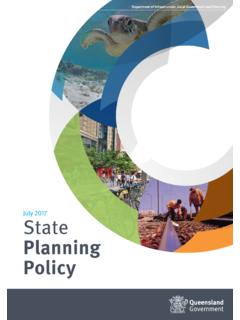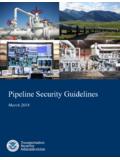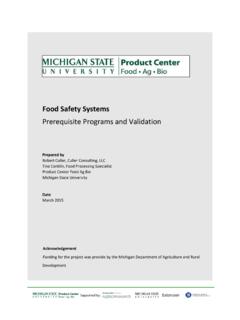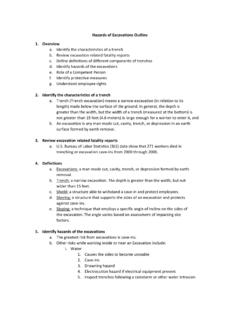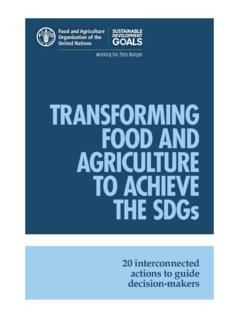Transcription of Exposure and vulnerability to natural disasters for world ...
1 Population Division Technical Paper No. 2019/4 December 2019 This publication has been issued without formal editing. The views expressed in the paper do not imply the expression of any opinion on the part of the United Nations Secretariat. Exposure and vulnerability to natural disasters for world 's cities* Danan Gu** Abstract This paper aims to investigate Exposure and vulnerability to natural disasters for cities with 300,000 inhabitants or more in 2018. The report uses data from the 2018 revision of world Urbanization Prospects, the spatial hotspot data on Exposure and vulnerability to natural disasters , as well as sources for estimating the urban extent of each city and for the classification of coastal and inland cities. The 2018 revision of world Urbanization Prospects includes estimates and projections for 1,860 urban agglomerations with 300,000 inhabitants or more as of mid-2018.
2 The spatial hotspot data, produced by Columbia University and the world Bank, includes information for six types of disaster, that is, cyclones, floods, droughts, earthquakes, landslides and volcanic eruptions. Based on these data, the paper examines Exposure of the 1,860 cities to the six types of disaster and the vulnerability to disaster-related mortality and economic losses. Variations in Exposure to risk of and vulnerability to natural disasters across city sizes, development groups, Sustainable Development Goals region and income groups are also presented. The present study seeks to inform urban planners and policy makers about the need to strengthen resilience, improve preparedness, and adapt strategies of cities to address the effects of natural disasters with a view to achieving the Sustainable Development Goals. Keywords: natural disasters , climate change, urbanization, city, Exposure , vulnerability Sustainable Development Goals: 11, 13 * Some parts of the paper were presented by Danan Gu, Patrick Gerland, Sara Hertog, and Frank Swiaczny at the annual meeting of the Population Association of America in 2019.
3 ** Population Division, United Nations Department of Economic and Social AffairsThe Population Division of the Department of Economic and Social Affairs provides the international community with timely and accessible population data and analysis of population trends and development outcomes. The Division undertakes studies of population size and characteristics and of the three components of population change (fertility, mortality and migration). The purpose of the Technical Paper series is to publish substantive and methodological research on population issues carried out by experts both within and outside the United Nations system. The series promotes scientific understanding of population issues among Governments, national and international organizations, research institutions and individuals engaged in social and economic planning, research and training.
4 Suggested citation: Gu, Danan (2019). Exposure and vulnerability to natural disasters for world 's cities. United Nations, Department of Economics and Social Affairs, Population Division, Technical Paper No. 4. This technical paper is available in electronic format on the Division s website at For further information, please contact the Population Division, Department of Economic and Social Affairs, Two United Nations Plaza, DC2-1950, New York, 10017, USA; phone: +1 212-963-3209; e-mail: Copyright United Nations, 2019, made available under a Creative Commons license (CC BY ) CONTENTS .. 1 SOURCES AND METHODS .. 2 III. MAJOR FINDINGS .. 5 IV. CONCLUDING REMARKS .. 20 REFERENCES .. 23 APPENDIX .. 27 1 I. INTRODUCTION The world is urbanizing. In 2018, about 55 per cent of the world s population lived in urban areas, an increase from 43 per cent in 1990. By 2050, more than two-thirds of the world s population is projected to live in urban areas.
5 The number of cities with 300,000 inhabitants reached 1,860 in 2018, rising from 305 cities in 1950 and 976 in 1990 (United Nations, 2018). Cities are socioeconomic hubs (Brunn, Hays-Mitchell, and Ziegler, 2008). In many countries, it is estimated that 70 to 80 per cent of the gross domestic product (GDP) is produced in urban areas (Weiss, 2001; Dobbs, Manyika, and Roxburgh, 2011). Indeed, cities are the locations where the capacity of our economic development, the future of societies and the world s ecosystem will play out (Brunn, Hays-Mitchell, and Ziegler, 2008; Sassen, 2009). The increasing concentration of population in urban areas, together with the high density of assets and the socio-economic and spatial vulnerabilities that characterize many cities, makes urban centres more susceptible to the risk of being severely affected by natural hazards than rural settings (Gencer, 2013). It has been estimated that the direct losses from all disasters in the period 1998-2017 totalled $ trillion, which is times as much as the overall losses of $ trillion in the period 1978-1997.
6 Slightly over two-thirds of the total losses in the period 1978-1997 were caused by climate- and weather-related disasters and this share increased to three-fourths in the period 1998-2017 (United Nations Office for Disaster Risk Reduction (UNDRR), 2019a). As a result of natural disasters , million people were killed and billion were injured in the past two decades, while millions were left homeless, displaced or required emergency help. Earthquakes and related tsunamis were responsible for more than half of these deaths (Centre for Research on the Epidemiology of disasters (CRED) and UNISDR, 2015a). In the year of 2018 alone, about 60 million people were affected by extreme weather events around the world , thousands of lives were lost because of earthquakes, tsunamis and volcanic activities, and millions of people were displaced because of floods, drought and storms (UNDRR, 2019a). The number of reported disasters is growing. It is estimated that the reported number of annual weather-related disasters was 335 between 2005 and 2014, an increase of 14 per cent compared to the period 1995-2004, and almost twice the level recorded during 1985-1995 (CRED and UNISDR, 2015b).
7 Climate-related disasters accounted for about 90 percent of the 7,255 major disasters between 1998 and 2017, most of which were floods and storms (UNDRR, 2019a). The devastating impact of these disasters underscore the importance to reduce the loss of life, the numbers of people affected, the damage to critical infrastructure and the economic losses. Evidence has shown that rapid urbanization and population growth drive to a large extent the impact of natural disasters (UNISDR, 2012; 2013). The greater the number of people settled in at-risk areas, the higher the probability of casualties and economic losses as a result of climatic or geodynamic events. Therefore, it is crucial to investigate, for the world s major cities, the potential risks of Exposure , economic losses and mortality due to natural disasters , environmental degradation and climate change (Dilley et al., 2005). Urbanization has become a prominent issue in the context of achieving the 2030 Agenda for Sustainable Development.
8 Consequently, the need to reduce the risks posed by natural disasters in urban areas is increasingly urgent in the context of global climate change (Gencer, 2013; UNISDR, 2012). City planners and local governments are key actors in efforts to reduce the risks posed by natural hazards and to build resilient urban societies (UNISDR, 2010). In recent years, research on hazards and risks from different academic disciplines have improved the understanding of natural disasters , vulnerability and risk management (Gencer, 2013). Yet demographic factors related to the size, number and geographic distribution of urban agglomerations, as well as to the projected patterns of growth of these urban agglomerations and urban populations, have not always 2 been properly integrated into analyses of climate change and disaster risk reduction (UNFPA, UNISDR, and UN-HABITAT, 2009; 2011). Such information could help improve understanding the relationship between urbanization and sustainable development and enable investigation of the potential risks faced by urban populations in the context of rapid urbanization.
9 Moreover, such research can inform future urban development policies and plans that anticipate and respond to environmental challenges, economic growth, public service expansion, changing patterns of energy consumption and the process of globalization. The main objective of this technical paper is to provide a global overview of Exposure and vulnerability to natural disasters for the world s cities with 300,000 inhabitants or more on 1 July 2018. In the context of rapid growth of urban populations exposed to natural disasters , the paper aims to raise awareness about disaster-related risks of Exposure and vulnerability faced by major urban areas as well as to provide information to inform sound management for risk reduction and improved policy frameworks under the Sendai Framework and the 2030 Agenda (UNDRR, 2019a; 2019b). The report integrates city population data from the 2018 Revision of the world Urbanization Prospects (WUP) (United Nations, 2018) with spatial hotspot data on risks of Exposure and vulnerability to natural disasters produced by the international research community (Dilley et al.)
10 , 2005). The report reviews levels of Exposure to six types of natural hazards or disasters for cities classified by population size, region, development group and income group. It further analyzes levels of vulnerability by risk of disaster-related mortality and economic losses. II. DATA SOURCES AND METHODS Several major datasets were used in the analysis contained in this technical paper. The 2018 revision of world Urbanization Prospects (WUP) contains population estimates (from 1950 to 2018) and projections (from 2018 to 2035) for 1,860 cities with 300,000 inhabitants or more on 1 July 2018. These 1,860 cities collectively were home to billion inhabitants in 2018, accounting for 56 per cent of the global urban population ( billion). The term city in this report refers to the definitions used in WUP, based on national sources, and may refer to a city proper, an urban agglomeration or a metropolitan area. The 1,860 cities are located in 154 countries, of which 79 countries had three or more cities and 59 countries had five or more cities with 300,000 inhabitants on 1 July, 2018.











